I would highly recommend you to go watch the debate yourself, which is an hour and thirty minutes long, on Oxford University’s YouTube channel, linked below.
On July 11th, 2023, George Monbiot, author of several books including Regenesis and columnist for The Guardian, met with Allan Savory of the Savory Institute at Oxford University’s Museum of Natural History auditorium to discuss this leading question:
Is livestock the solution to mitigating climate change?
I’m glad, for one, that this discussion happened. It needed to happen. Monbiot’s been spouting about how livestock grazing is bad, and Holistic Management is anything but the answer for so long that it’s time that Savory showed him where he was wrong and what he wasn’t understanding.
But I don’t think Allan got through to him at all. George was so caught up in his carbon arguments to be able to see beyond what Savory was trying to show.
Allan was trying to show that reductionist management is the main issue and root cause. This is why Allan mentioned government policies and how government policies were (and are) the root cause of desertification and loss of biodiversity.
But George just doesn’t get it. He’s missing the broader picture. Monbiot is convinced that he’s arguing against Holistic Management as a “grazing system” and has based his arguments around that.
The only problem is that he doesn’t understand what Holistic Management actually is. How the hell can you argue against something that you simply do not understand? I’ll tell you: by creating a lot of strawmen arguments and being so arrogant and ignorant that you miss the forest for the trees.
Clearly, Monbiot doesn’t understand that we humans have been the main issue all along.
“We humans” as in our decision processes, from day to day, month to month, and year to year.
That is what Holistic Management is: a decision-making framework to help us better make decisions using the three things that WE are able to manage: Social (human resources), Financial, and Environment.
It’s NOT a “grazing system.” Rotational grazing is a grazing system. Continuous set-stock grazing is a grazing system. But not Holistic Management.
This is why Allan answered the question in a manner that surprised and confused a lot of people. His main focus is on government policy, which is a noble cause. To many, it seemed like an arrogant thing to do, to appear to avoid the question and be so unwilling to talk about carbon sequestration and methane emissions from livestock.
The reason that Savory was so unwilling to talk about them was because he felt they were mere side issues; “we’re rearranging the deck chairs on the Titanic,” he said twice in the debate. And, well, he’s not wrong.
But it sure made it frustrating for Monbiot who made an effort to answer the question! I almost felt sorry for him. Almost. You’ll read later why I don’t actually.
Let’s go back to Allan’s radical and seemingly arrogant view that the carbon argument is a bit of a red-herring. Still a relevant issue, but still missing the forest for the trees.
The quantification analyses of carbon sequestration and greenhouse gas emissions only point to the symptoms of the way we manage our resources. The fact that pasturing systems or farming systems “store” less carbon than what Monbiot considers “natural” systems is, again, only pointing to the symptoms of the decision-making processes of how we manage the land. Like overgrazing, bare soil, erosion, compaction, leaching and runoff, and so on.
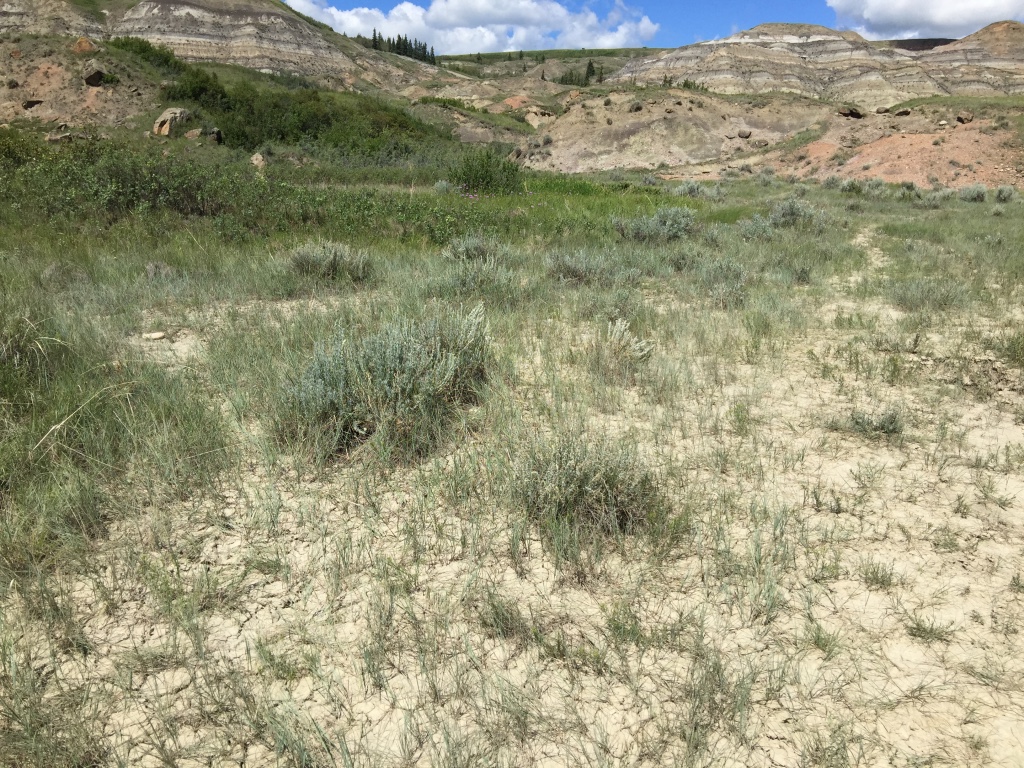
The animals aren’t deciding to overgraze the land, kill trees or cause compaction and bare soil. They’re not moving themselves, building their own fences or watering points. It’s the collective human mind that is deciding that is what must happen, when, how, and where. The animals are just doing their thing, which is eating, pooping, peeing, drinking, and ruminating.
How could those animals be blamed for causing climate change or land degradation when they’re just going where the human wants them to go and being allowed to “do their thing”?
It’s a case of blaming the victim. They’re mere pawns in the system. The chess pieces. We’re the game players in the chess game, folks.
Basically, this “mountain of evidence” that Monbiot has gathered over the last decade or so against livestock grazing is utterly meaningless. It’s pedantry. It means nothing because it fails to connect the dots between The HOW and Us Humans and how Us Humans have created institutions and organizations that have made these reductionist decisions and conclusions about how money, land, animals, and people should “best” be managed.
That’s not to say carbon and methane aren’t relevant because they are. They’re a necessary part of understanding how the ecosystem functions. But it’s the pedantic pissing contest that’s going on between the likes of Monbiot and those who are for regenerative agriculture and regenerative grazing in the fight for “who’s more right” about carbon storage, carbon sequestration, methane emissions, methane oxidation and sequestration, and so on.
We can argue about what peer-review papers say or don’t say until we’re blue in the face and stack mountains of paper and data points about carbon measurements in and out of the soil, in and out of ruminants, in and out of farming operations versus natural environments all we want. At the end of the day, it’s just hubris.
All hubris.
At the end of the day, we need to figure out how to reverse desertification and increase biodiversity, and it’s pretty clear certain scientists and farmers and ranchers have long already figured out how.
We just need to figure out how to get arrogant fools like Monbiot on the same freakin’ page. If we even can. The human mind with its preconceived notions and stubborn personality-blended paradigms is the hardest to change by far.
But enough of that. Let’s turn now to some concepts that Savory brought up several times which warrant explanation here.
It’s about this term called Oxidation.
In the video, Allan showed what happens to a thatched roof in a humid, non-brittle environment versus a thatched roof in an arid, brittle environment. The differences shown were that the roof in the non-brittle environment was decaying biologically, allowing new plants to grow on top, and the roof in the brittle environment was turning grey, chemically decaying.
In other words, dead plant matter doesn’t rot in arid, brittle environments. They just die and wither away into carbonaceous material that crumples up and blows away with the wind. Or remains on the plant for years.
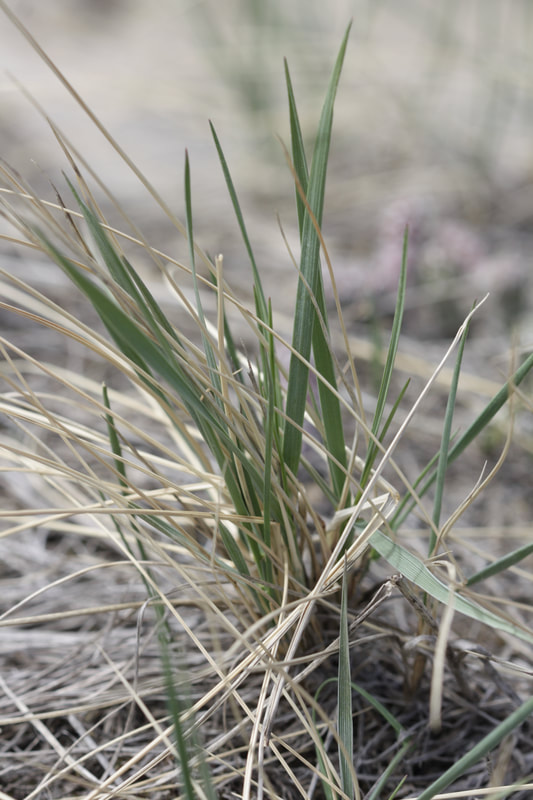
The more plant material clinging on and preventing new plants from poking through with the lack of sunlight, eventually suffocating the main plant to death. The dead material eventually gets so brittle that it detaches from the main plant and blows away with the wind. As more of these plants die, and more of this material dies and is blown away, more bare soil is created and exposed.
This is how desertification occurs.
In non-brittle environments, however, the opposite happens: dead plant material is rapidly broken down into soil for reuse by plants and other biological organisms.
The difference is the biological activity in the soil. Soil biology needs moisture or humidity and the right range of temperature to function properly. Rainforests are a perfect example. There is steady humidity and warm temperatures that encourage continual soil biological activity. Deserts, though, or arid grasslands, experience much wider fluctuations in temperature and humidity that make it difficult for soil biology to function all year long. Certain periods, like winter, drought, hot summers, dry spring or autumn givest soil biology a very short window of opportunity in which they can come alive and do some biological decay before the environment turns against them forcing them back into dormancy again.
Rainforests are an extreme example of a non-brittle environment. Deserts are the extreme of a brittle environment.

Speaking of soil biology, let’s turn now to the “carbon issue” that Monbiot made a huge deal out of.
These were the three “crucial” issues that Monbiot claimed must be met in order for livestock grazing to be able to mitigate climate change:
- There must be more carbon stored than what the ecosystem supplies, where carbon storage is where carbon remains in the ecosystem, and carbon sequestration is the cycling of carbon;
- It must show that the level of carbon storage counteracts or is greater than the greenhouse gas emissions from the livestock production chain, like with manure and enteric fermentation, and,
- It must be able to counter the capital carbon opportunity costs; in other words, the inability for the land to be “rewilded” (or reforested) because it is being used for livestock grazing.
All these sound fine and dandy at the surface, but that’s without looking at the finer details. The finer details reveal that these three criteria are based on faulty logic, outdated science, and a misunderstanding of ecological integrity.
Monbiot seems intent on the fact that grasslands should be used for something else other than grazing land. Like letting them turn back into forests as a means to store carbon. This is because, in his mind, he’s already made the conclusion that no amount of grazing could ever store nor sequester as much carbon as forests can. What he doesn’t seem to realize is that Forests store most of the carbon in the tall woody vegetation. This storage seems like a better idea than grasslands until those forests start dying out or are destroyed by fire, storms, insect pests, or disease. Once those attack the trees, that stored carbon is released into the atmosphere.
The sure-fire best way to store carbon is with grasslands and in living plant material and living animals, regardless if they’re domesticated ruminants, wild ruminants, grasshoppers, crickets, termites, or gophers. (It makes zero difference in the methane ecological context, too.) Grasslands, as well as savannahs, are well known for successfully storing carbon in the soil (and they are “natural land cover,” despite Monbiot’s claims otherwise). They do that with the help of soil biology, which extends their root systems far beyond what plants are able to do. Mycorrhizal fungi come to mind. Many grassland species also have higher root biomass than leaf-and-stem biomass, as shown below.
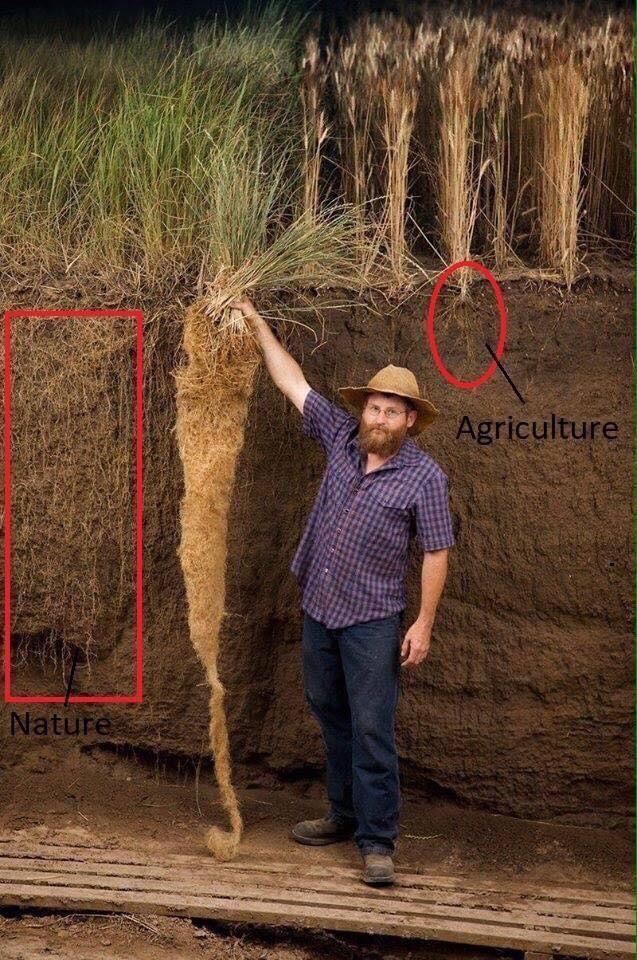
Sadly, Monbiot never acknowledged the importance of soil biology in any of his “mountain of evidence” and [cherry-picked] “top-to-bottom research,” if he even considered it of any importance at all.
Soil biology is very important because its presence indicates just how well or poorly we’re managing the land and its animals. It’s all a part of the biodiversity issue that Allan constantly brought up and the desertification issue. It’s not something to ignore, despite being a “new science” and still considered by reductionist-minded academics as “foo-foo dust.”
Already, criteria number two is met because Holistically Planned Grazing allows soil biology to “store” more carbon in the soil. Regular and planned disturbance by ruminants (again, regardless of whether domesticated or wild, but preferably domesticated as they’re usually much easier to manage) shocks and stimulate plants to regrow new leaf material rather than senesce or go to seed and die. This stimulation also stimulates biological activity underground to cycle nutrients, including carbon, feed plants and take what plants offer as “liquid carbon” (a term coined by Dr. Christine Jones) and use it for their own selves. The dead biological activity or necromass is the carbon stored in the soil for as long as the soil remains undisturbed by mechanical means (i.e., plowing).
Carbon is, yes Monbiot, a “finite resource,” but one which has been cycling continually for billions of years. Ruminants do not put new carbon back into the atmosphere in the form of methane and carbon dioxide. They simply cycle it.
Carbon storage happens not just in the soil but in organisms that are both dead and alive: in us, in plants, in animals, as well as in the soil. But carbon must be in a perpetual cycle in order for it to be continually available for use by the next generation of people, plants, animals, and soil organisms. The problem with carbon in the atmosphere is that we are not “capturing” enough of it in living organisms, and I think that was a point that Allan tried to make at some point in the debate. Especially plants. We don’t have enough perennial plants on earth, so we’ve decided it was a great idea to kill off many of them in favour of growing annuals for oil, food, and animal feed.
Methane, especially, is a problem child because there are fewer and fewer healthy ecosystems to help mitigate it and oxidize it before it hits the atmosphere. I doubt Monbiot has heard of hydroxyl radicals (OH-) before, but they are created when plants emit oxygen when they photosynthesize and that oxygen reacts with water vapour creating hydroxyl radicals, for example. Hydroxyl radicals react with methane causing a chemical reaction that creates water vapour and carbon dioxide. Plants take in carbon dioxide during photosynthesis, and the cycle continues.
That’s an extremely simplistic and basic way to explain it, but the point I’m trying to illustrate is that the more plants there are in the ecosystem, the greater the chance methane from enteric fermentation is mitigated and a non-issue. We need the help of well-managed ruminants to do that. Again, they create the disturbance needed to regularly stimulate that carbon sequestration/storage “pump” in the ecosystem to feed the soil biology and get more carbon in the soil.
Methane is an issue because less vegetation gives off hydroxyls, allowing methane to just rise up in the atmosphere and stay there for its lifetime of about 10 years. Ruminants in feedlots are indeed part of the methane problem because there’s no ecosystem of green living organisms photosynthesizing and helping in the creation of hydroxyl radicals so that those methane molecules can be “caught” and rendered inert.
Why are those feedlots there? Again, that’s an “us” problem. Not a livestock problem.
And the methane issue is yet another symptom of a human-created problem, which is how we determine the management of the land and its animals.
The third criterion has already been answered by answering the first because of the flawed logic of what “opportunity costs” entail. Being rather subjective than objective and wrongly assuming that forests are “stable carbon stores,” the concept of opportunity costs don’t answer how a supposed stable, climax community can rapidly change or be destroyed and reverted back to an early, mid, or late-successional community.
I mean, shit happens. Forests don’t remain forests forever, and I’m talking through natural means, not necessarily human-caused.
Grasslands and savannahs are a lot more resilient than dense forests in those respects, especially when well-managed using ruminants as the grassland-management biological tool. The stability of that community is not only in how much carbon it can store above and below ground but also in its level of biodiversity.
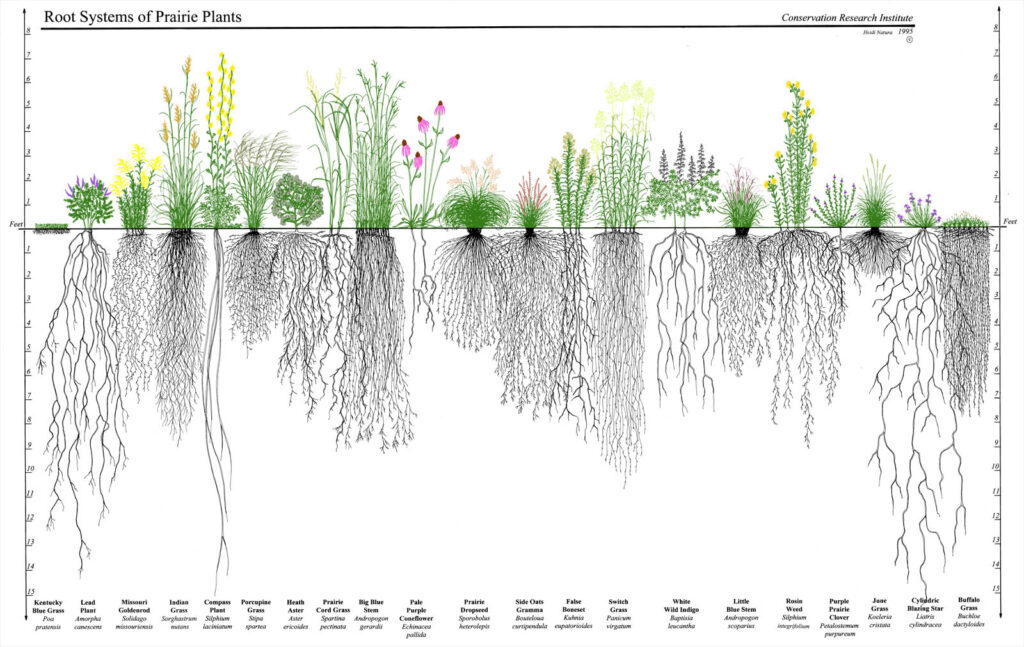
Put simply, the more diverse the community, the greater its capacity to bounce back in light of shocks and disturbances to the system: drought, flooding, fire, grazing pressure, or the various effects of climate change. A “stable” community of fewer species is less able to withstand such shocks and takes longer to recover.

And I don’t think Monbiot is able to grasp that when all he has is cherry-picked literature to go off of.
None of this is “magic” as Monbiot, out of his frustration in not grasping Allan’s beyond-him concepts, claimed. It’s just what’s called “good management” and good, Holistic Decision Making.
That’s it.
This “magic” is the stuff between our ears that powers all that what’s happening in the world today, from raging forest fires to the food that gets to our tables, the taxes we must pay and the increasing size and monopolization of global corporations.
It’s also this stuff that makes Monbiot believe that “rewilding” is the solution to the so-called “livestock-caused problem.”
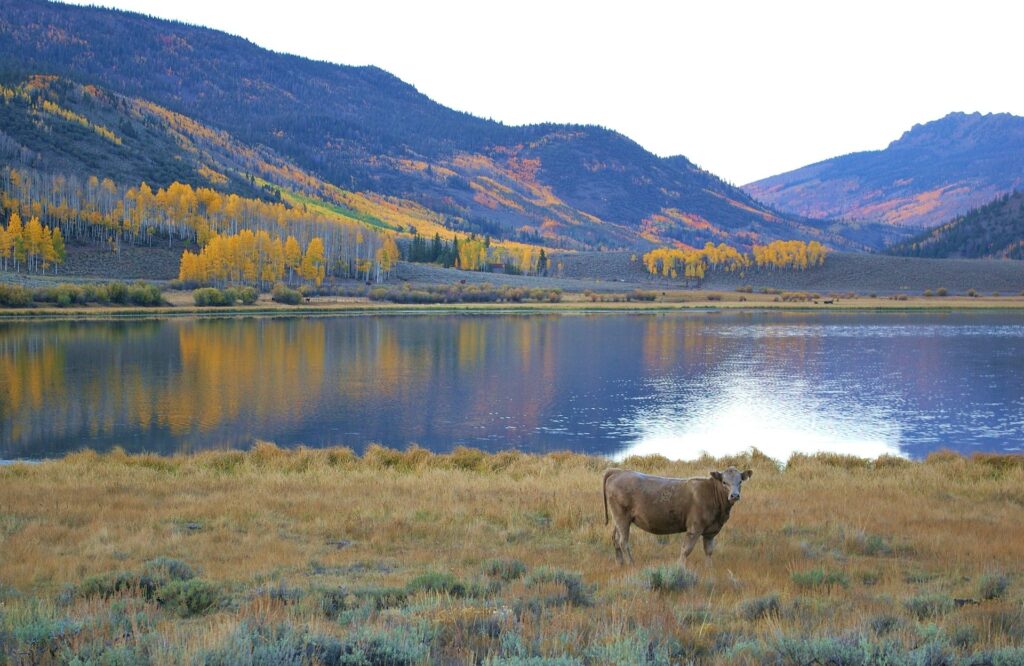
Rewilding is a term that Monbiot created as a means to create an ecosystem that contains no livestock and which reverts back to its “original natural form.” This also means that humans are removed from the landscape and only “nature” as George understands it is permitted to take over and move the land from cropland or pasture into what Monbiot envisions as “natural forest” or “natural grassland.”
Monbiot also expressed his view of what he called “Rewilding Agriculture” as a very, very small number of animals on a huge expanse of landscape, with zero human management involved. It’s not agriculture when a tiny population of free-roaming animals left to turn feral are able to live in a large land base. It’s more like a nature preserve where feral cows, sheep, goats, pigs, chickens, and horses are allowed to live according to Monbiot’s claims.
What made me happy was how Allan was able to see past Monbiot’s bullshit claims–literally–and point out the obvious: that this “rewilding” idea is a rehashed, ancient concept of rest. Monbiot is merely reinventing the wheel and putting lipstick on a pig.
Rest, in the context of Holistic Management, is when the land receives no significant animal-caused disturbance for longer than it takes plants to recover from grazing or browsing. Total rest is when no animals have been on the land for at least a year to several decades. Partial rest is where a reduced number of animals are on the land and are eating some plants here and there but are still not creating enough disturbance to be considered significant.
Allan debunked this idea of rewilding by mentioning how the Sahara desert in North Africa came about through human mismanagement. North Africa, in biblical times, was an oasis of grasslands and savannahs and once was home to many people and their livestock. But because people didn’t know how to manage their animals, they severely overgrazed the area then left it to rest, likely coming back much too soon to do it all again, with maybe fewer animals this time, until the land turned into desert. Constant plowing for crops didn’t help matters either.
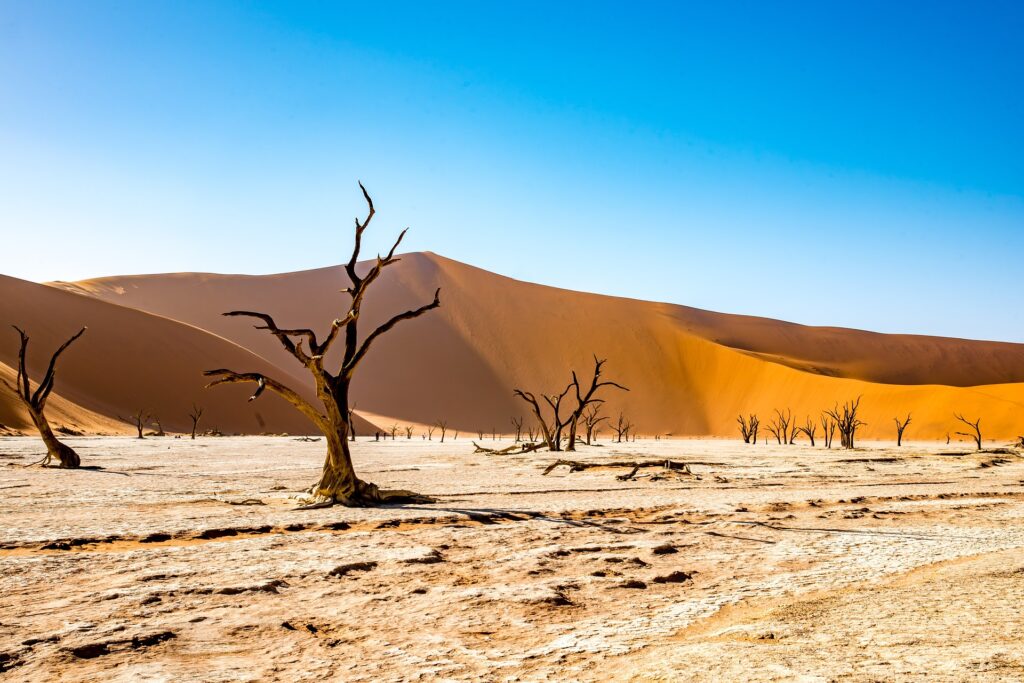
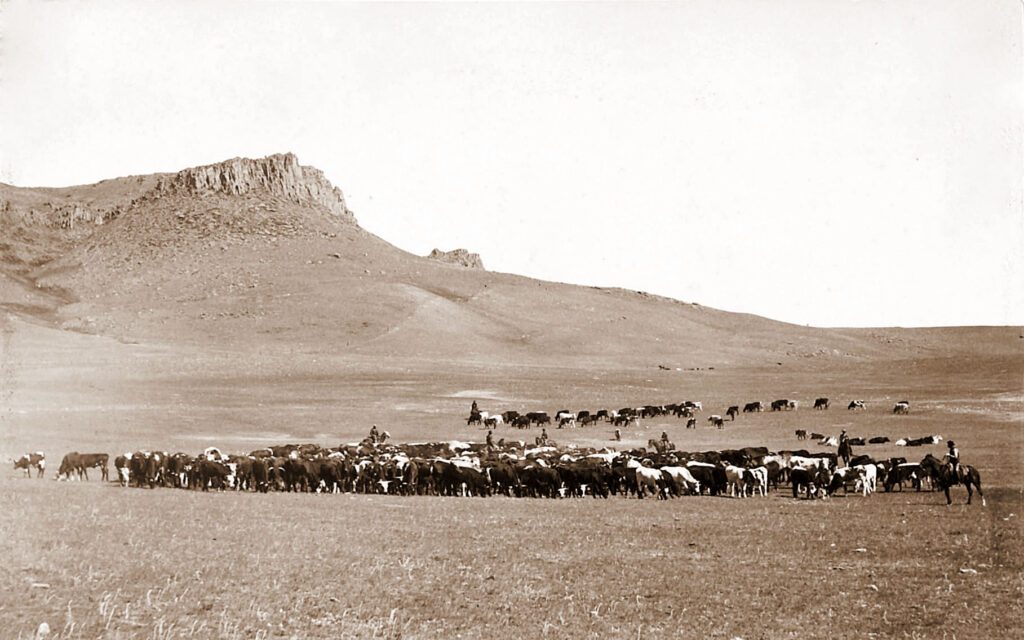
This type of grazing was commonly practiced in North America, particularly the United States of America (less so here in Canada); cattle herds were gathered and moved north to the new railway system in the American West post-Civil War era. Livestock (including sheep) were allowed to severely overgraze the land before moving onward because there was nothing else left to eat save sagebrush, mesquite, cacti, soapweed and other plants that those animals routinely avoided. Government policy did not change until the Dirty ’30s (the period from 1930 to 1939, the start of the Second World War) when it was finally recognized that the land was severely degrading and something needed to be done about it.
But, the policies, besides the Homestead Act and the 2nd Amendment, were decidedly reductionist. They did help “solve” the land degradation issue for a few years by legislating that ranchers do not go beyond a set stocking rate and must de-stock their herds when running out of grass and feed.
However, the land still degraded, even if it temporarily recovered from the massive and severe overgrazing. We saw above when we discussed how oxidation occurs in brittle environments like the American West. What we didn’t mention was that if there are no ruminants to help trample and remove that dead material on a timely basis, the plants slowly die, allowing the shrub brush to encroach in.
This legislation is still in place in the US government today. Canada copied that “good idea” and also made it a policy that is routinely advocated by agriculture extension officials.
This is an example of the policy framework that Allan has been trying to talk about in that debate.
The point is that this policy framework is livestock-blaming rather than management-blaming. It only serves to identify the grazing of cattle, not how ranchers manage them, as the problem. Therefore, the solution that is in place is to reduce the number of animals on the landscape.
The policy has also been applied to wild ruminants, as Allan mentioned at the very beginning. His two prime examples were the 40,000 elephants that were shot because the Rhodesian (now Zimbabwean) government thought they were to blame for the degradation happening in a national park; same with the thousands of wild sheep that the US government destroyed for the same reasons.
The attempted destocking did nothing to halt nor reverse the degradation happening on those landscapes.
This is the point that Allan was getting to how Monbiot’s rewilding fantasies would not realistically apply to brittle landscapes. Removing grazing animals will not halt nor reverse the previous damage done by reductionist management as legalized and mandated by governmental policies. It will not cause the landscape to improve. The exact opposite will happen, has already been proven to happen, and will continue to happen if nothing is done.
The only place where Monbiot’s rewilding theory would apply is in non-brittle environments like in Brazil or in the UK. But not in sub-arid or arid regions like much of the world, such as Africa, North America, and Australia.
But, Monbiot just didn’t get it, and he proved that moreso by foolishly accusing Savory of lying and misrepresenting the comparison fenceline photos (like that of the Karoo in South Africa, shown below) commonly used to portray the successes of Holistic Management.
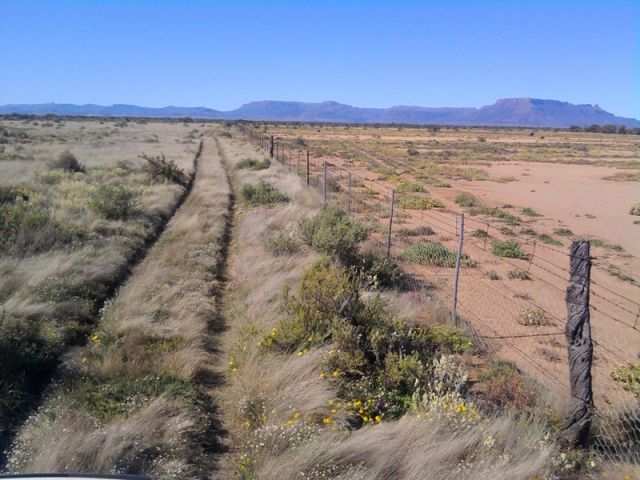
According to his “reliable source,” whom he claimed did some sort of “investigation” into the photograph (and others produced by the Savory Institute, including Savory himself), he stupidly told everyone in the room that it was either switched or fake: that the left side was the one completely rested with no livestock, and the right side was holistically grazed
Monbiot, at that point, lost all the remaining little credibility, integrity and accountability he had with me by making such a dumb, dumb move. I was appalled he had the audacity to make such claims. Such stupidity!
No wonder some of my peers have decided to give him the nickname “MonbIDIOT.”
You see, that photograph above was published in the book Call of the Reed Warbler by Charles Massy. It was taken by the man who farms that side of the fence line on which that photo was taken, Norman Kroon. Norman has been practicing Holistic Management on his farm for 50+ years, and when he started in HM with Allan Savory in the 1970s, his farm looked exactly like that on the right side of the fence. Just by changing the way he managed his animals on the landscape, he was able to reverse desertification occurring on his land and turn it from bare, degraded land to the kind of highly biodiverse, highly vegetated land on the left side of the fence in the photo above.
By the way, both pieces of land are grazed using livestock. The only difference is the management, aka the holistic paradigm shift from reductionist thinking, that has been the result of such drastic differences. The land on the right has been partially rested and overgrazed. If livestock were completely removed, nothing on the right side would change; it would only worsen. If livestock were completely removed on the left side, it would slowly go back to what is shown on the right side of the fence.
Another example I’ll supply is by my good friend Seth Itzkan of Soil4Climate. Someone, not Monbiot himself but who could be considered an associate, accused the photos he provided of being faked and merely a result of wet season versus dry season. (I mention this because George would’ve made similar silly and unsubstantiated assumptions, using the claim that it came from someone “reliable” and who “knows the area very well.”) Seth explained, quoted below, that this couldn’t be farther from the truth.
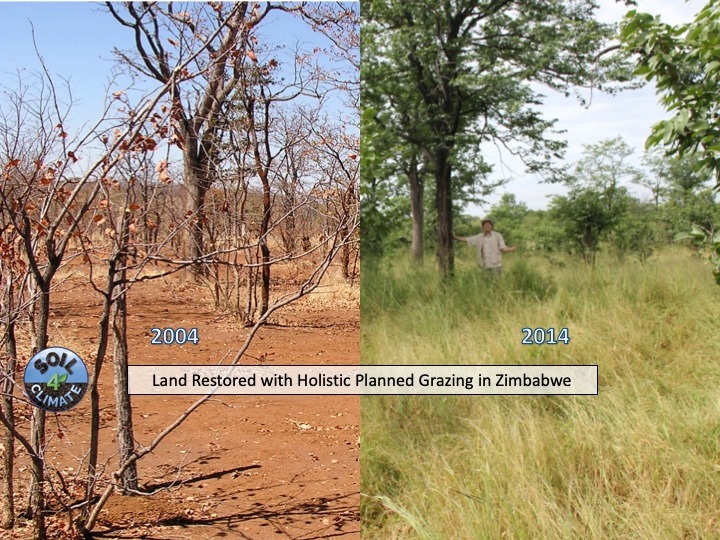


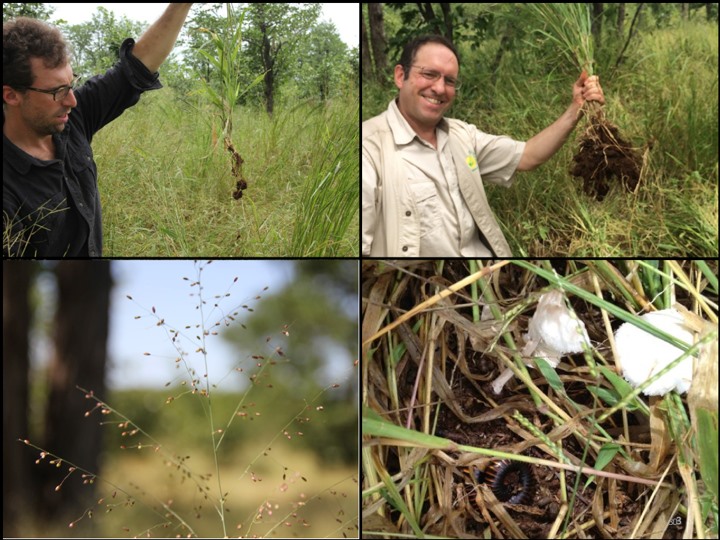
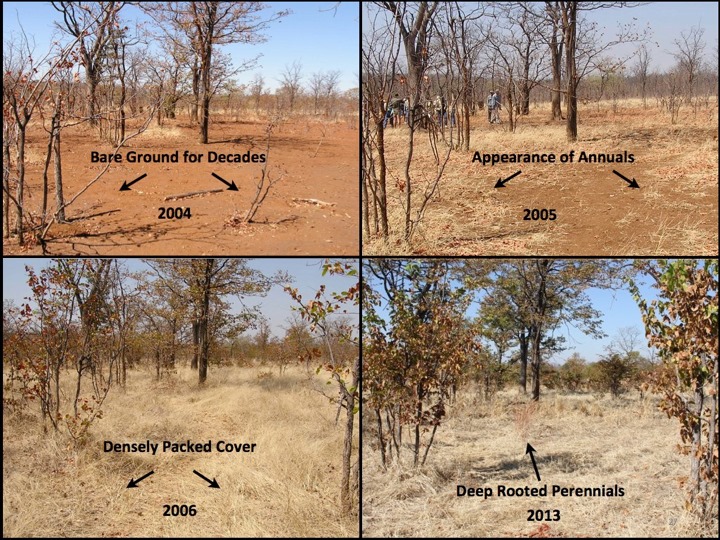
Recently a poster questioned the validity of the banner image of this group. They suggested that it was just a dry season to wet season comparison and not really indicative of ecological restoration with cattle. Nothing could be further from the truth and the poster, who claimed to understand the area, obviously doesn’t. These pictures are from the Africa Centre for Holistic Management in Zimbabwe were I have spent extensive time. The degraded land in the left photo from 2004 was that way for decades and is similar to much of the land now in southern Africa and many other dryland / brittle parts of the world. In 2004 the Africa Centre (British spelling) began the restoration with livestock and you can see that by 2005 new growth is starting. It is a stringy annual that grows sideways on the surface (I forget the plant name now). By 2006 there is good cover of the annuals. By 2013 (or sooner, but I was there to document it then) we see the deep rooted perennials take hold. These are of the aristida https://en.wikipedia.org/wiki/Aristida and heteropogan families https://en.wikipedia.org/wiki/Heteropogon_contortus (known as Spear Grass). Finally, by 2014, we see the appearance of a climax perennial called panicum maximum http://pza.sanbi.org/panicum-maximum (also known as Guinea Grass). I am standing in a patch of it under the tree (it likes shade). This is a “high succession” perennial. It has small seeds and can only grow in high quality (carbon rich) soil.
The notion, suggested by the poster, that the 2004 and 2014 pictures in the banner image for this group are just a comparison of dry and wet seasons is absurd and insulting, but, nonetheless, it compels us to properly explain, so, there you have it.
Of course, this transition is only possible because of the ADDITION of livestock, holistically managed, into the mix. Without them, the desertification would have simply gotten worse and spread, like is the case in much of the dryland parts of the world that are drastically, and tragically, understocked.
Thank you.
Seth Itzkan of Soil4Climate in the S4C Facebook group. Original post: https://tinyurl.com/musrspez
It is absolutely absurd that anyone would think these are faked. But, people on social media often have their blinders on and are often more ecologically illiterate than they want to admit.
If you were to ask me, I don’t need Seth’s assurance to know that these photo comparisons are real. The left blatantly shows bare ground, and the right is full of vegetation. There is no [ecologically] logical, rational way that bare ground magically appears in the dry season (keep in mind this is in Zimbabwe, not the USA, and not in the Karoo region of South Africa either), and so much vegetation magically appears in the wet season. Wouldn’t the dry season still bear plenty of vegetation, albeit more dead and brown, as it would the wet? And wouldn’t the wet season still bear a ton of bare ground just as it would in the dry season, especially when it remains undisturbed by grazing ruminants? Think about it.
I’ve seen what bare ground and high-density vegetative ground look like during Canadian summers that are excessively hot and dry (imitating the “dry season” in Zimbabwe and South Africa) and excessively cool and wet (akin to the “wet season”). The bare ground, with sparse vegetation, doesn’t suddenly magically increase in plant density when it gets a lot of moisture. It just stays the same. The same with the high density of vegetative ground. The only time when that bare ground increases in plant density is when the ground is disturbed by some means, either by mechanical seeding or by the timely trampling, eating, and manuring of grazing herbivores.
THINK ABOUT IT! It makes zero ecological sense otherwise. Nature doesn’t do that kind of magic that ecologically illiterate people believe it can do!
In the case of Monbiot’s asininity and blatant ecological illiteracy, I can only gather that he has never ventured beyond the non-brittle environment of the British Isles and seen for himself both the desertifying and progressive management that has been very successful both in Africa and in North America and Mexico.
I think George Monbiot needs to book himself a flight to Zimbabwe to visit Allan Savory’s Dimbangombe ranch himself to see what this “crazy old man” is talking about. I would suggest he also visit Norman Kroon’s ranch in South Africa.
He should also fly to Mexico to visit Alejandro Carrilo’s ranch in northern Mexico and get a good sense of how HM versus conventional set-stock grazing makes a huge difference on the land. Then, head northward through the Western US to see how the land has desertified with increasingly fewer livestock on the landscape (as mandated by government policy, remember), as well as those areas that have had no livestock for decades. He then should visit other ranches that have applied HM to their management operations in that broad area.
It seems this is the only way to help Monbiot open his eyes and prove how HM is helping heal the land. He’s not accepting any other means of understanding, and he definitely doesn’t seem keen on looking at Soil4Climate’s growing compendium of scientific evidence blatantly showing that HM, also known as regenerative grazing/ranching and adaptive multi-paddock grazing (AMP grazing), does work and isn’t just pseudoscientific mumbo-jumbo!
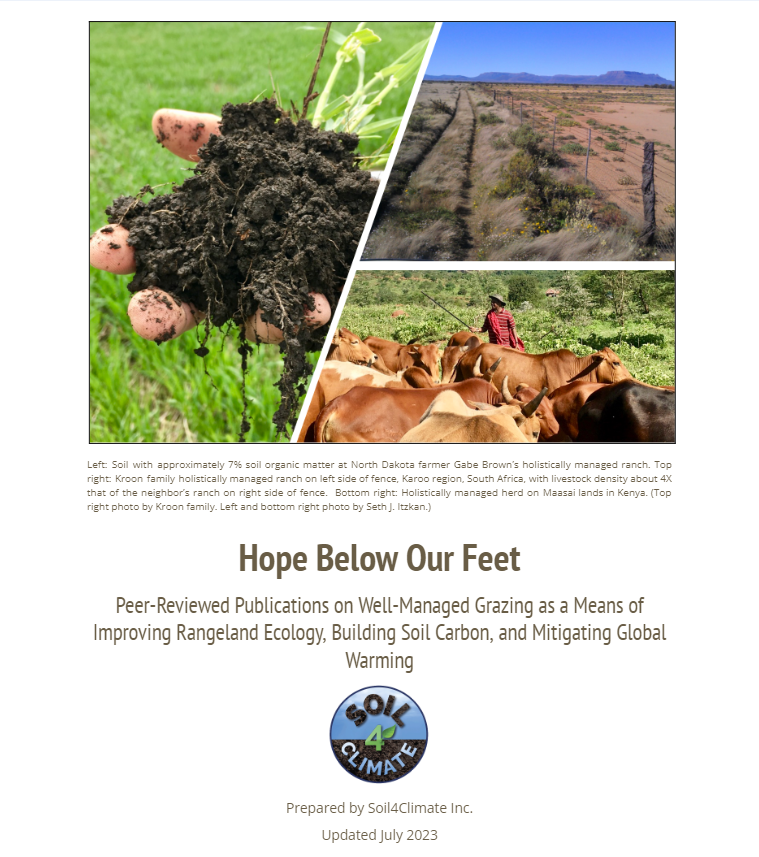
But we know he’s not going to go down without a fight. His pride and arrogance just prohibit him from seeing beyond what he thinks is “truth.”
However, I sincerely wish that Allan talked more about what he talked about in his ever-famous TED talk (see below) instead of poignantly and stubbornly sticking with his governmental policy narrative.
I think he would’ve gathered greater understanding from the audience rather than losing and confusing them with government policy, desertification and loss of biodiversity from the start.
Overall, it wasn’t much of a debate. Some called it a total trainwreck, others found Monbiot easier to comprehend than Savory. But, as I said at the beginning, it needed to happen.
I mean, if it wasn’t to sway Monbiot, maybe it was a cheeky and sneaky way for Savory to show just how clueless, ecologically illiterate and asinine Monbiot really is?
Worth thinking about!
0 Comments